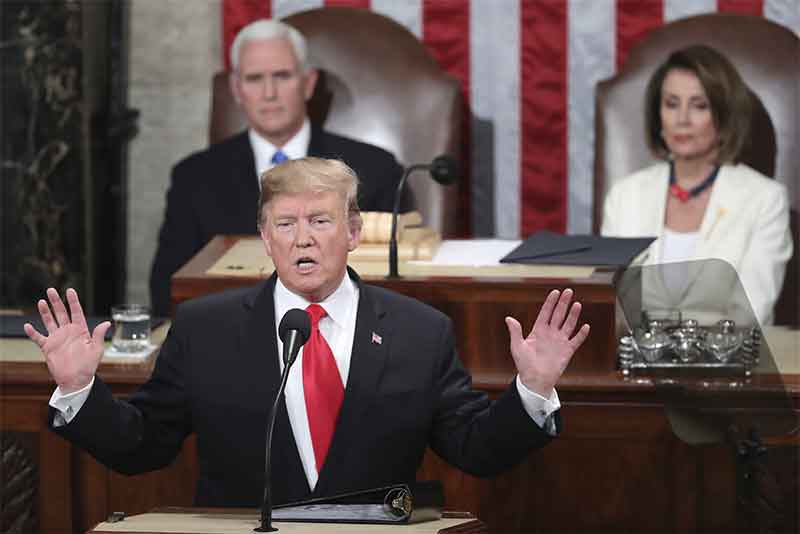
At a time when India has been given the presidency of G-20, efforts are on to accelerate change on several fronts including the water crises which is listed as Sustainable Goal Number 6—Clean Water and Sanitation. Series of Conferences on various topics and in different states of the country have been planned, some already held and many more yet to come culminating in a Summit Gathering in New Delhi in September 2023.
“Water, water, every where, / Nor any drop to drink,”wrote a poet. The theme for World Water Day 2023 is “Accelerating Change.” How shall we respond to the call of the United Nations; India is nearly 40% water stressed. Water affects us all, we need everyone to take action. It means you and me! Individually and severally all three protagonists of the society—individuals, institutions, communities—can make a difference by changing the way we use, consume and manage water in our lives. Examples of revival of vanished water bodies, making seasonal streams and rivers perennial have been shared through the media from time to time.
With the announcement of Water Action Agenda, to be launched at the United Nations 2023 Water Conference–the first event of its kind for nearly 50 years, 22-24 March 2023 in New York, this is a once-in-a-generation moment for the world to unite around water. The Conference will discuss what needs to change, how the world should create a collective action plan to help all member-states reach the identified goals faster than ever. UN believes that now is the time for each person to take responsibility for their actions. As a result, we will be able to accelerate the necessary changes needed to improve hygiene standards worldwide. By doing this, every person in the world can access clean drinking water.
Additionally, water is crucial for advancing human rights, reducing poverty and inequality, and enabling peace, justice and sustainability. Sustainable Development Goal 6 is a unique opportunity for mainstreaming water in the national and subnational planning. Increasing policy coherence and effectiveness is critical for optimizing the use of limited water resources and for integrating strategies to end poverty. SDG 6.3 states that by 2030, water quality may be improved by reducing pollution, eliminating dumping and minimizing release of hazardous chemicals and materials, halving the proportion of untreated waste water, and increasing recycling and safe reuse. Each country would have to set a specific target.
A healthy human being can live for a month without food, but will die in less than a week without fresh water. Ninety-seven percent of all water on earth is in the form of salt water. Only 3 percent is fresh, and two-thirds of that is ice. The amount water available today is the same as it was when dinosaurs roamed the planet. The problem is not simply the availability and supply of water; the problem is people—our increasing numbers and our flagrant abuse of one of our most precious, and limited, resource. Add to this the problems caused by wastage and pollution of water. It is not just industrial and municipal institutions that are responsible; these can be monitored and controlled by specific laws, the burden of wastage and pollution of water belongs to us all. Water’s nature itself is a part of these complications. The simple structure of hydrogen and oxygen has been called the universal solvent. It takes into solution a vast number of substances, and what it can’t dissolve, it simply pushes along or grinds up fine enough to carry in suspension. Human beings have put this characteristic of water to work in thousands of ways. We wash with it; we flush with it; we mix it with chemicals to spray on our farms and fields; we play with it and in it. It is in the processes that make paint, plastic, meat, and umpteen other things.
Unfortunately, although we had registered some success in fulfilling the target set in the Millennium Development Goals (2000-2015) the situation today is becoming more desperate and alarming. According to a report endorsed by14,000 scientists from 1,990 jurisdictions in 34 countries: “We are nearing or have already crossed tipping points associated with critical parts of the Earth system, including the West Antarctic and Greenland ice sheets, warm-water coral reefs, and the Amazon rainforest.”
A well-known forester and ecologist, Richard St. Barbe Baker (1899-1982), wrote many decades ago when the world was least concerned about the destruction of the environment and the far-reaching consequences: “Water must be a basic consideration in everything: forestry, agriculture and industry. The forest is the mother of the rivers. First we must restore the tree cover to fix the soil, prevent too-quick-run-off, and steady springs, streams and rivers. We must restore the natural motion of our rivers and, in so doing, we shall restore their vitalizing functions. A river flowing naturally, with its bends broads and borrow, has the motion of the blood in our arteries, with its inward rotation, tension and relaxation. Picture a river which has risen from a mountain spring in a well-treed water shed: trees of mixed species and different shaped roots fixing the soil at different levels and reducing competition for food and water. The leaf-fall and humus on the floor of the forest will act as a sponge to retard quick run-off after a storm. Water will sink through to porous soil and form myriads of springs which will feed the land and rivers during the drier months of the year. Mountains and high-ground should be covered with protective forests up to the snow-line, in high country, fields should be kept small and carved out of the forest and always be tree-surrounded…”
According to World Bank Report, October 2022: “Approximately 2 billion people around the world do not have safely managed drinking water services, 3.6 billion people do not have safely managed sanitation services, and 2.3 billion lack basic handwashing facilities. Gaps in access to water supply and sanitation, growing populations, more water-intensive patterns of growth, increasing rainfall variability, and pollution are combining in many places to make water one of the greatest risks to economic progress, poverty eradication and sustainable development. The consequences of such stress are local, national, transboundary, regional, and global in today’s interconnected and rapidly changing world. Consequences will be disproportionately felt by the poorest and most vulnerable.”
Access and availability of water is today a major source of potential conflict. Water stress can also exacerbate conflicts and political tensions which are not directly caused by water. Gradual reductions over time in the quality and/or quantity of fresh water can add to the instability of a region by depleting the health of a population, obstructing economic development, and exacerbating larger conflicts. This is especially the case where river basins are shared by two or more countries. Using a purely quantitative methodology, Thomas Homer-Dixon successfully correlated water scarcity and scarcity of available arable lands to an increased chance of violent conflict.
Examples include: (i) The Nile which flows through 9 countries which are planning to extract more water with little regard to supply or each other’s needs.
(ii) The Tigris and the Euphrates, of which Turkey controls the headwaters via 33 dams, while downstream countries like Syria and Iraq depend completely on the Euphrates. (iii) The Ganga, on which some 40 crores of Indian farmers depend, is experiencing disruption in its flow due to deforestation lower Himalayas and erection of dams. Government of India is endeavouring for better relations with Nepal and Bangladesh for the shared responsibility; yet another serious issue being debated in recent years is the melting of glaciers in the Himalayan region. (iv) The Colorado, over which the United States and Mexico have had great difficulties. Until the Mexicans were ready to retaliate by putting raw sewage into San Diego bay, the United States removed most of the water so that a sickly salty stream was all that could reach Mexico and its once flourishing horticultural industry. (v) Areas such as the lower regions of China’s Yellow River or the Chao Phraya River in Thailand, for example, have already been experiencing water stress for several years. (vi) The alleged media reports of China’s plans to divert or dam the Brahmaputra (Tsang-po in Tibet) will have serious repercussions of water supply in the north-region of India.
As we know well, problems of supply are matched by problems of quality. In most agricultural and all urban areas there is serious deterioration of rivers, aquifers and alarming ground water depletion everywhere but especially in India. The world population has crossed 8 billion and with the demand for freshwater doubling every 18 years, at this rate, we are, indeed, moving towards ecological suicide.
Government of India held its 1st All India Annual State Ministers Conference on Water in Bhopal in January 2023 themed: WaterVision@2047. The Government’s National Water Mission was launched in the context of National Action Plan on Climate Change, to ensure integrated water resource management. It covers a range of issues such as conservation of water, minimizing wastage and ensuring more equitable distribution both across and within states. The Mission takes into account the provisions of the National Water Policy and developed a framework to optimize water use by increasing water use efficiency by 20% through regulatory mechanisms with differential entitlements and pricing. It seeks to ensure that a considerable share of the water needs of urban areas are met through recycling of waste water, and ensuring that the water requirements of coastal cities with inadequate alternative sources of water are met through adoption of new and appropriate technologies such as low temperature desalination technologies that allow for the use of ocean water. The National Water Policy revisits the consultation with States to ensure basin level management strategies to deal with variability in rainfall and river flows due to climate change.
This includes enhanced storage both above and below ground, rainwater harvesting, coupled with equitable and efficient management structures. The Mission seeks to develop new regulatory structures, combined with appropriate entitlements and pricing. It seeks to optimize the efficiency of existing irrigation systems, including rehabilitation of systems that have been run down and also expand irrigation, where feasible, with a special effort to increase storage capacity. Incentive structures have been designed to promote water-neutral or water- positive technologies, recharging of underground water sources and adoption of large scale irrigation programmes which rely on sprinklers, drip irrigation and ridge and furrow irrigation.
Appropriate indicators have been evolved for assessing adaptation benefits of the actions. Together, with enhancements in current and ongoing programmes included in the Technical Document, for guiding the country to adapt to climate change and disaster mitigation. The ‘Technical Document’ annexed with the NAPCC has identified key areas related to: (a) studies on management of surface water resources, (b) management and regulation of ground water resources, (c) upgrading storage structures for fresh and drainage system for wastewater, (d) conservation of wetland, and (e) development of desalination technologies, (f) Jal Shakti Abhiyan: Catch the Rain (i.e. rain water harvesting).
Humanity’s crying needs will not be met by a struggle among competing ambitions or by protest against one or another of the countless wrongs afflicting a crises-stricken age. It calls, rather, for a fundamental change of consciousness. How much longer can we wait until each human being learns to accept responsibility for the welfare of the entire human family? The acute suffering majority of us are experiencing not just in our country but all over the world can be alleviated when members of the human race act upon the common recognition of their essential interdependence and oneness. Let’s then: “Arise, Awake! Stop Not till the Goal is reached.” There is light at the end of the tunnel of accelerated tumultuous change.
——————————————————–
*The author is a social worker and independent researcher based in New Delhi. Views expressed are personal.














































